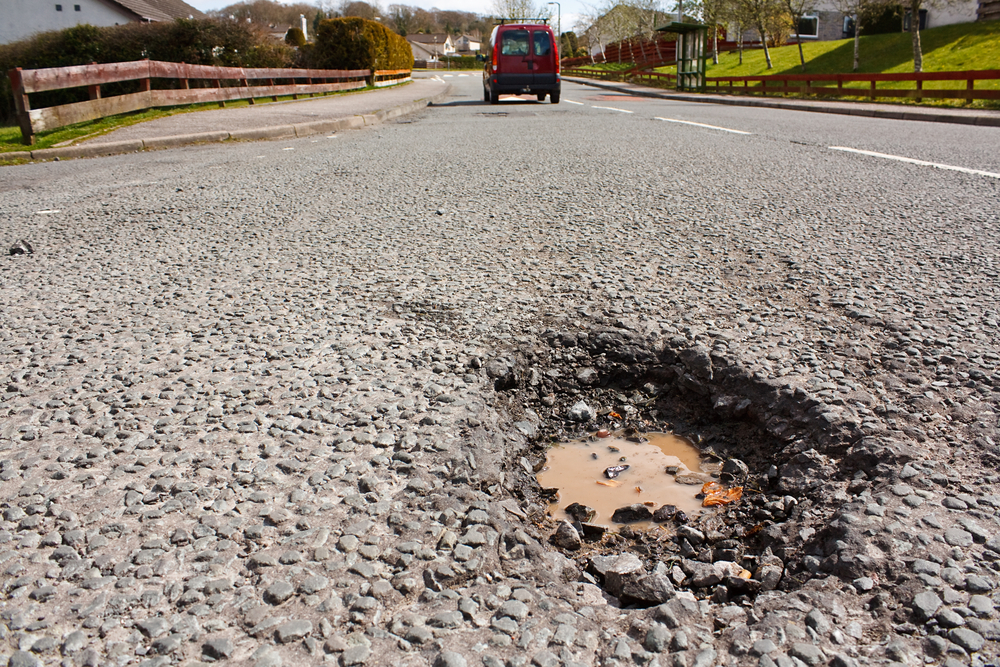Insurance
Pothole-related breakdowns on the rise: how to claim

Guest Author:
Paloma KubiakThe RAC attended 11% more pothole-related breakdowns in the last quarter of 2017 than it dealt with in the same period in 2016.
According to the RAC’s Pothole Index, 2,830 breakdowns were logged between October and December 2017 which could be attributed to damage sustained by potholes.
It said these vehicles broke down because of damaged shock absorbers, broken suspension springs or distorted wheels as a result of poor quality road surfaces.
This number was up from the 2,547 reported in the same quarter of 2016, highlighting that the higher rainfall and frost seen in the last three months of 2017 took its toll on the roads.
In all, RAC said 1.2% of breakdowns in 2017 were pothole related, up from 1% in 2016 and 0.8% in 2015.
The RAC added that if the weather is particularly wet or cold over the next few months, there could be a sharp rise in potholes which will ultimately lead to more damage to cars.

Wellness and wellbeing holidays: Travel insurance is essential for your peace of mind
Out of the pandemic lockdowns, there’s a greater emphasis on wellbeing and wellness, with
Sponsored by Post Office
RAC chief engineer, David Bizley, said: “For the majority of drivers, these latest statistics are likely to be met with concern. After several years in which the surface quality of our roads appeared to be improving, the latest analysis suggests that for the third successive quarter we have gone backwards.
“Potholes are a menace for drivers and indeed for all road users. They represent a serious road safety risk and anyone who has driven into one will know it can be a frightening experience, not to say a potentially costly one – distorted wheels, broken springs and shock absorbers can be very expensive problems to put right. And for those on two wheels it can be genuinely life-threatening.”
In the 2017 Autumn Budget, the Chancellor announced additional funds for fixing potholes but the RAC said it wants to see local authorities given the certainty of ring-fenced, long-term funding from central government to enable local authorities to bring all of the UK’s roads up to a standard that is fit-for purpose.
“Drivers contribute around £40bn of motoring based taxation a year and many will feel that they are having to endure roads that are substandard and therefore getting poor value for money,” he said.
How to report and claim for pothole damage
Potholes and other defects on local roads come under the responsibility of the local council so you can report an issue via FixMyStreet by entering the location or postcode.
If the pothole is on a main road such as a motorway or A-road in England, you should contact Highways England on 0300 123 5000 or email info@highwaysengland.co.uk. In Scotland, visit MyGov while for those in NI, use NIDirect.
When it comes to claiming for pothole damage, success depends on whether the pothole has already been reported, according to the RAC.
This is because councils have a statutory defence that they can’t be held liable if they don’t know about an issue.
You may be able to make a claim if you have comprehensive car insurance.
Otherwise, before making a claim, the RAC said motorists should take these 10 steps:
- Take notes: write down all the key details including: location of the pothole, its size, shape and depth. If it is safe to do so, make a simple sketch of the area showing the position of the pothole including any surrounding features. It is also worth taking a photograph of the offending pothole.
- Any witnesses? Where possible, get details of any witnesses as it may help your claim.
- Get quotes: Make sure you get quotes for all repairs. Keep all quotes, bills and garage receipts and make copies of them to support your claim.
- Make your claim: In England, contact Highways England and tell it about the issue. If it believes you have a valid claim, it will send a damage report. Once you have this, you will need to send copies of estimates or invoices for the repairs, a current MOT certificate and photos of the damage if you have them.
- Prepare for rejection: You will get a decision about your claim within 90 days. The council or local authority may defend the claim under section 58 of the Highways Act and its right to statutory defence. If it can prove it has a regular inspection and repair system in place, it may be able to reject your claim.
- Do your research: Before going back to the council to discuss the claim further, review the guidance provided on its website, check what the council is liable for and verify if it’s carrying out a reasonable system of inspection and repair.
- Be willing to negotiate: If the council or local authority makes you an offer, you should seriously consider it. You may be able to negotiate but according to Which? while you can claim the cost of repairs, you won’t necessarily be compensated for additional travel expenses or the inconvenience caused.
- Consider the Small Claims Court: If your claim is rejected, you may be able to go to the Small Claims Court. However, if you choose to seek legal advice you could end up incurring legal costs.
- Weigh up the pros and cons: It may not actually be worthwhile making a claim for compensation, if the amount is below a certain level. Before attempting to make a claim, do your research first as it could be a costly, time-consuming process.
- Keep calm: Always try to remain calm and professional when dealing with the council or local authority. Keep copies of all the letters and emails you send and receive – if you do go to court, you will have to provide a record of all your correspondence.